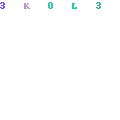Web accessibility a design principle that ensures people can use and interact with the website’s content regardless of their capabilities. It is imperative to put a high value on web accessibility when designing and developing websites or applications.
Correct HTML markup is essential for the accessibility of your site. For example, using logical headers helps screen readers distinguish the page’s structure. It is advised to also use the appropriate link description and to provide adequate contrast in colors.
WCAG Guidelines
HTML0 — The Web Content Accessibility Guidelines (WCAG) are web accessibility standards. application development accessibility. These standards are utilized by front-end developers testers, QA, and others in the web team to meet minimal accessibility requirements on websites. WCAG includes 13 guidelines arranged around four main principles: perceivable, operable, understandable, and robust, known by the acronym the POUR. Each guideline is accompanied by testable success criteria to establish compliance.
Unilever, an international company that makes 400 different brands that are distributed in more than 2 billion homes worldwide It maintains a site that balances web accessibility and an aesthetic design. Its site has been designed to meet WCAG guidelines for colors and contrast in keyboard navigation as well as heading structure.
The most notable feature on its website is the display of visual indicators to indicate which elements on the page have keyboard focus. This makes the users able to read and navigate the text of a webpage using a mouse, as well as for screen readers, as well as for other text-to speech programmers. This approach can also be used for other web applications that require solely keyboard navigation.
 Semantic HTML
Semantic HTML
Apart from keeping content and style separate semantic HTML helps make your site easier for assistive technology to interpret. When a browser is able to process well-written semantic HTML, the content presented is transmitted onto assistive technologies such as screen readers to be interpreted and transformed into the formats users will require.
Furthermore making use of landmarks — which are a group of HTML tags that mark parts of your webpage – can help ensure that the most important areas of your site are accessible via keyboard to text-to speech and screen reader user. Also, ensure that you include brief explanations of pictures (also known as alt attributes) to those who are unable to read or interpret images.
Keyboard Friendly Web Interfaces
Certain types of users surf on the internet using a keyboard rather than an actual mouse. They can be skilled “power” keyboard users, or suffer from motor impairments which prevent them from performing the exact motor actions required for operating a mouse. The key is making interactive and navigational features easily available through the use of tabbing, and display a visual indicator that indicates that the keyboard is currently focused.
In other words, if you’re using input fields for typing text, a form, or drop-down menus, ensure that the elements you have are tabbed and that they provide a clear indication of the current status. Screen readers and other screen magnification tools employ the focus indicator for determining which object is present at any given time.
It’s crucial that all content on a page be accessible and easily read web application development service. This is a major aspect of web accessibility, especially for those who have hearing or vision disabilities or are blind or rely on assistive technologies to navigate through your website.
Color Contrast
Utilizing color with enough contrast ensures that all users even those who suffer from color blindness can comprehend and browse web pages. Many people with dyslexia benefit from high-contrast texts as well.
role and property explain the status of widgets for assistive technologies such as screen readers. For example”search” is a role “search” is used to identify a field on a form for a search function. Roles are stable and do not alter when a widget is changed, whereas properties are dynamic and change as a user interacts with a widget.